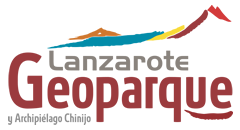Project Description
A hydromagmatic construction, almost 300 m tall, with a diameter at the base of more than 2 km and a ring crater of around 1238 m in diameter. The volcanic construction is formed by a strong series of pyroclastic waves, that go from wet to dry from wall to ceiling, showing all the characteristic features of this type of volcanic deposits. There are abundant impact structures, dunes and anti-dunes, U channels, crossed stratifications, accretional lapilli. Volcanic material, slumps and ripples, generally showing pronounced laminar structures. However, there are no magmatic materials, as opposed to what happens in many other surtseyan buildings in the Canary Islands, which indicates a hydromagmatic activity until the end of the eruption. The cone is affected by processes of marine erosion, that generate a coastal cave of great longitudinal development and a cliff that constitutes an excellent outcrop of the complete eruptive sequence.
The main feature of interest of this geosite is related to volcanology, as well as geomorphological, petrological and stratigraphic. It is one of the most emblematic hydromagmatic buildings in the Canary Islands, as it represents the most significant construction of this kind. It has an annular crater with the highest diameter on the islands. It is an excellent place to explain the formation sequence of a hydromagmatic building.

